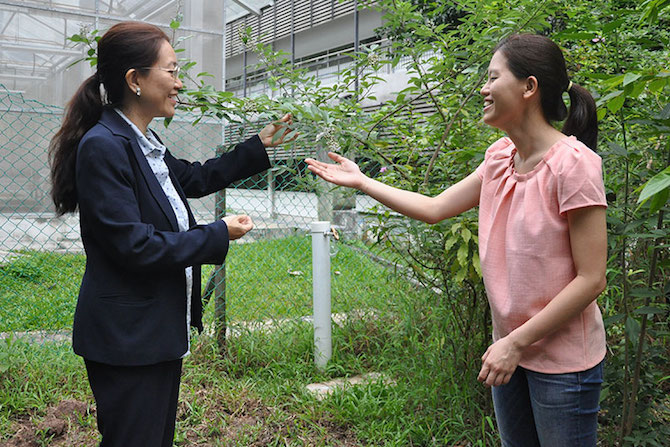The usage of fresh medicinal herbs continues to flourish in Singapore, despite increasing urbanisation.
Associate Professor Koh Hwee Ling, PhD student Siew Yin Yin and Dr Sogand Zareisedehizadeh (who graduated recently) from the NUS Department of Pharmacy, together with Associate Professor Tan Chay Hoon from the NUS Department of Pharmacology, have recently published a study in the Journal of Ethnopharmacology on the usage of fresh medicinal plants in Singapore. They found that, in spite of the availability of advanced medical care in the country, segments of the population continue to rely on fresh medicinal herbs for general well-being and health treatment. As such, the authors felt an urgent need to document local usage of these herbs.
The research team engaged some 200 interviewees over three years and found that 414 plants represented by 104 plant species were reportedly used by the respondents. Five most commonly used plants were Clinacanthus nutans (Sabah Snake Grass), Strobilanthes crispus (Black Face General), Pereskia bleo (Seven Star Needle), aloe vera and ginger. In many cases, leaves were the most popular plant part used, with many respondents boiling them in water to extract the active ingredient. The majority of the respondents shared that in addition to using the plants for health promotion, they depended on the plants for managing respiratory ailments and cancer. Some of the plants used can be found in the wild and by the roadside in Singapore, growing as weeds.
One interviewee said that he had been using aloe vera for the past 10 years to treat burns and relieve congestion. He also used another plant Andrographis paniculata (Chuan Xin Lian) for pimples, believing that it would help to lower one’s amount of body heat.
The benefits of using fresh medicinal plants, as opposed to dried herbs in the form of finished products, include freshness, convenience and low (possibly zero) cost. However, Assoc Prof Koh cautioned that consumers should consult qualified practitioners and healthcare professionals before using any plants for medicinal purposes.

In 2009, Assoc Prof Koh and several authors published A Guide to Medicinal Plants, which provided information on 75 native and non-native medicinal plants growing in Singapore. Assoc Prof Koh is planning to update the guide, based on the plant species discussed during the interviews. She said: “Despite the advanced standard of healthcare in Singapore, fresh medicinal plants continue to play a vital role, representing vast untapped potential.”
The team felt there is insufficient research in this area and believe that this study would serve as a useful resource for identifying promising plants and carrying out scientific evaluations for future drug discovery efforts. Meanwhile, healthcare professionals could actively enquire from the patients about the potential usage of medicinal plants.
